Key Takeaways
1. Define project scope and justify with a solid business case
"Make sure that you've made allowances for risk activity when first drafting the plan out, but later in the project risk activity could even lead to a significant update of the plan."
Scope clarity is crucial. A well-defined scope outlines what the project will and won't deliver, managing expectations and preventing misunderstandings. This includes listing requirements, their sources, and priorities. Use the MoSCoW approach (Must have, Should have, Could have, Won't have) to prioritize requirements effectively.
Business case justifies the project. It should include:
- Benefits (financial gains, measurable improvements, non-quantifiable benefits)
- Context (fit with organizational strategy)
- Cost and timescale estimates
- Justification (benefits-driven, compliance, maintenance, or enabling)
Keep the business case updated throughout the project to monitor ongoing viability. Be prudent with benefit projections, slightly understating rather than overstating to avoid perceptions of failure and incorrect strategy decisions.
2. Plan with deliverables first, then map out activities
"How can you possibly determine activities and time durations with any accuracy if you're unclear about what it is you're going to build?"
Product-based planning is powerful. Start by identifying and defining the project's deliverables or "products." This approach ensures a clear understanding of what needs to be produced before determining how to produce it. Use techniques like the Work Breakdown Structure and Work Flow Diagram to visualize the project's products and their relationships.
Activities follow products. Once products are defined, map out the activities required to create them. This sequence helps in:
- Identifying missing work
- Revealing dependencies
- Providing a clear picture of the project's structure
The Work Flow Diagram becomes a powerful tool for risk identification, control points, and progress monitoring. It offers a memorable visual representation of the project that stakeholders can easily understand and reference.
3. Manage resources effectively, balancing time, cost, and quality
"You live in a world of limited resources and, usually, not enough time which means you always have more work to do than time and resources allow."
Resource planning is multifaceted. Consider:
- Staff resources: Skills, availability, and productivity
- Physical resources: Equipment, materials, and facilities
- Financial resources: Budgets and cash flow
Use techniques like Resource Histograms and the Critical Path Method to identify and resolve resource conflicts. Remember that "full-time" staff aren't truly full-time due to various factors (meetings, breaks, administrative tasks).
Balance the project constraints. Visualize project constraints as four dogs pulling on a canvas:
- Cost
- Quality
- Scope
- Time
When one "dog" pulls, others must adjust. Understand this dynamic when planning and managing changes. Sometimes, one constraint (e.g., time) may be fixed, limiting your options for adjustment.
4. Build and motivate high-performing project teams
"Projects are about people."
Effective leadership is crucial. As a Project Manager, balance management (controlling work) with leadership (inspiring and guiding). Understand what motivates team members, using theories like Herzberg's motivation-hygiene theory. Recognize that hygiene factors (e.g., salary, working conditions) prevent dissatisfaction but don't motivate; true motivators include achievement, recognition, and growth opportunities.
Foster team development. Guide teams through stages:
- Forming: Introduce members and discuss project objectives
- Storming: Address conflicts and concerns
- Norming: Establish team standards and operating guidelines
- Performing: Execute project work efficiently
Recognize team members' differences using tools like the Controller-Analyst Matrix. This helps in assigning tasks, resolving conflicts, and maximizing team performance.
5. Track progress and control changes rigorously
"Projects are always going into the unknown to some extent, so you can almost guarantee that your project won't go exactly the way you thought."
Monitor progress accurately. Use product-based planning to create clear, frequent milestones. This approach provides factual reporting of completed (quality-checked and signed-off) products rather than relying on subjective percentage-complete estimates. Tools like the Work Checklist and color-coded Work Flow Diagram offer visual, easy-to-understand progress tracking.
Control changes effectively. Implement a change control process to manage scope creep:
- Use Change Request forms to document proposed changes
- Assess impacts using the "four dogs" model (cost, quality, scope, time)
- Make decisions based on project constraints and benefits
- Update plans and communicate changes
Maintain a Change Log for overview and set up a change budget to allow for some flexibility without constant high-level approvals.
6. Communicate clearly and frequently with all stakeholders
"Communications breakdown – the big project killer"
Effective communication is vital. Develop a Communications Plan addressing:
- Who needs what information
- When they need it
- How it will be delivered
- Who is responsible for providing it
Consider various communication methods:
- Written reports
- Meetings (in-person or virtual)
- Project website
- Presentations
Tailor communication to stakeholders. Identify and analyze stakeholders using tools like the Stakeholder Matrix. Understand their influence and interest levels to determine appropriate engagement strategies. Remember that stakeholder positions may change throughout the project, requiring ongoing analysis and adjustment of communication approaches.
7. Navigate project closure and learn from the experience
"Just because the final deliverable has been handed over, that doesn't mean the project is finished."
Plan for closure. Closure activities include:
- Evaluating project outcomes
- Handing over deliverables
- Releasing resources
- Closing financial accounts
- Conducting post-project reviews
Ensure a smooth transition for team members, either back to their original roles or onto new projects.
Learn from experience. Conduct a thorough project review:
- Record project information for future reference
- Document lessons learned (both successes and challenges)
- Measure benefits achieved
- Plan for any ongoing benefit realization after project closure
Share insights gained with the organization to improve future project performance. Remember that some benefits may only be realized long after the project has officially closed, so plan for ongoing measurement and reporting as needed.
Last updated:
FAQ
What's Project Management for Dummies about?
- Comprehensive Guide: The book offers a thorough overview of project management principles, techniques, and best practices, covering everything from planning to execution and closure.
- Practical Approach: It emphasizes real-world applications and practical advice, making it accessible for both beginners and experienced project managers.
- Structured Learning: The content is organized into clear sections, addressing different aspects of project management, such as planning, execution, and risk management.
Why should I read Project Management for Dummies?
- User-Friendly Format: The book is designed in an easy-to-understand format, breaking down complex concepts into manageable sections suitable for all experience levels.
- Real-World Examples: It includes numerous examples and case studies that illustrate key concepts, helping readers relate the material to their own projects.
- Comprehensive Coverage: Covering a wide range of topics, the book provides a holistic view of project management, making it a valuable resource for anyone involved in managing projects.
What are the key takeaways of Project Management for Dummies?
- Importance of Planning: Effective project management begins with thorough planning, including defining objectives, deliverables, and timelines.
- Monitoring and Control: Regular monitoring of project progress and costs is essential to ensure projects stay on track, with techniques like Earned Value Management introduced.
- Communication and Team Dynamics: Clear communication and strong team dynamics are crucial for achieving project goals, with strategies provided for fostering collaboration and addressing conflicts.
What is the Project Manager's role according to Project Management for Dummies?
- Day-to-Day Management: The Project Manager oversees daily operations, ensuring the project stays on track and meets its objectives.
- Coordination and Communication: They coordinate team efforts and serve as the primary communication hub between the project team and stakeholders.
- Problem Solving: The Project Manager addresses challenges proactively, adapting the project to unforeseen circumstances and ensuring successful outcomes.
How does Project Management for Dummies define project scope?
- Scope Statement: The scope is defined through a written Scope Statement that outlines what the project will cover and what it will not, helping to manage expectations.
- Managing Expectations: Clearly defining scope helps avoid misunderstandings and ensures that all stakeholders are aligned on what the project will deliver.
- Challenging Scope: The book encourages challenging the scope during the planning phase to ensure all necessary elements are included and unnecessary components are excluded.
What is Earned Value Management (EVM) as described in Project Management for Dummies?
- Performance Measurement Tool: EVM assesses a project's performance by comparing planned progress with actual progress and costs incurred.
- Key Metrics: The three key figures in EVM are Planned Value (PV), Earned Value (EV), and Actual Cost (AC), which help calculate variances and performance indices.
- Proactive Management: EVM allows project managers to take corrective actions early if the project is falling behind schedule or exceeding budget.
How does Project Management for Dummies suggest managing stakeholders?
- Identifying Stakeholders: The book emphasizes identifying all stakeholders who may be affected by or have an interest in the project.
- Stakeholder Analysis: Analyzing stakeholders based on their influence and attitude helps tailor communication and involvement strategies.
- Engagement Strategies: Strategies for engaging stakeholders include consultation, communication, and participation to ensure their support and minimize opposition.
What is the significance of the Activity Network in Project Management for Dummies?
- Visualizing Dependencies: The Activity Network helps visualize the sequence and dependencies of project activities, aiding in understanding task relationships.
- Calculating Project Duration: It allows project managers to calculate overall project duration by considering the sequence and duration of each activity.
- Identifying Critical Path: The Activity Network is crucial for identifying the critical path, determining the minimum time required to complete the project.
How does Project Management for Dummies recommend estimating activity durations?
- Consulting Experts: The book advises consulting with team members and specialists who have experience with similar activities for accurate estimates.
- Using Historical Data: Emphasizes using historical data from past projects to inform estimates, improving accuracy.
- Employing Estimation Techniques: Techniques such as Delphi and three-point estimating help refine duration estimates and account for uncertainty.
What is the significance of communication in project management according to Project Management for Dummies?
- Foundation of Success: Effective communication ensures all stakeholders are informed and aligned on project objectives and progress.
- Two-Way Communication: Encourages feedback and values it, fostering collaboration and addressing issues promptly.
- Regular Updates: Keeping stakeholders updated through regular progress reports and meetings builds trust and engagement.
What are the four main stages of a project as outlined in Project Management for Dummies?
- Starting the Project: Involves assessing the project idea and determining its feasibility before detailed planning.
- Organising and Preparing: A comprehensive Project Plan is developed, detailing deliverables, resources, and risk management.
- Carrying Out the Work: Focuses on executing the project plan, monitoring progress, and making necessary adjustments.
- Closing the Project: Involves formally closing the project, evaluating success, and documenting lessons learned.
How can I apply the principles from Project Management for Dummies to my projects?
- Start with Planning: Thoroughly plan your project, defining objectives, deliverables, and timelines, using tools like Work Checklists.
- Monitor Progress: Implement regular monitoring practices, such as Earned Value Management, to assess performance against the plan.
- Engage Stakeholders: Involve key stakeholders throughout the project lifecycle, ensuring their input and feedback are considered.
Review Summary
Project Management for Dummies receives mixed reviews, with an average rating of 3.66/5. Readers appreciate its accessibility for beginners, practical examples, and clear explanations of project management concepts. Many find it useful for understanding basics and applying principles to various projects. However, some experienced managers find it too simplistic, and a few note editing issues. The book is praised for its systematic approach but criticized for lacking depth in specific methodologies. Overall, it's considered a solid introduction to project management, particularly valuable for newcomers to the field.
Similar Books
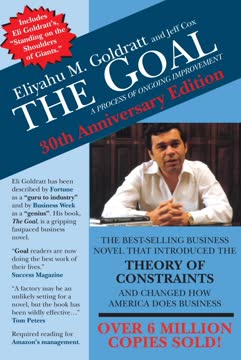
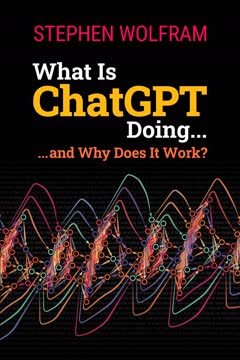
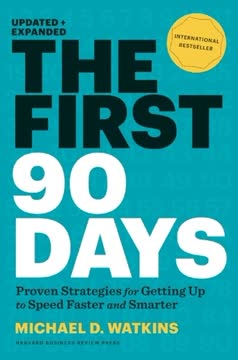
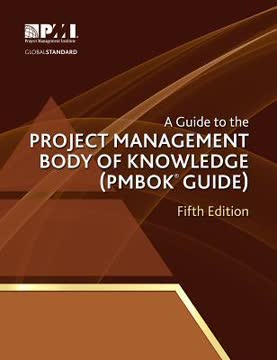


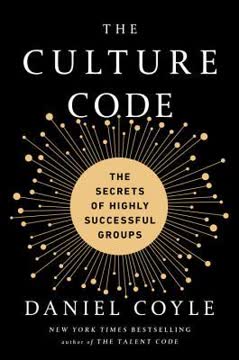



Download PDF
Download EPUB
.epub digital book format is ideal for reading ebooks on phones, tablets, and e-readers.





